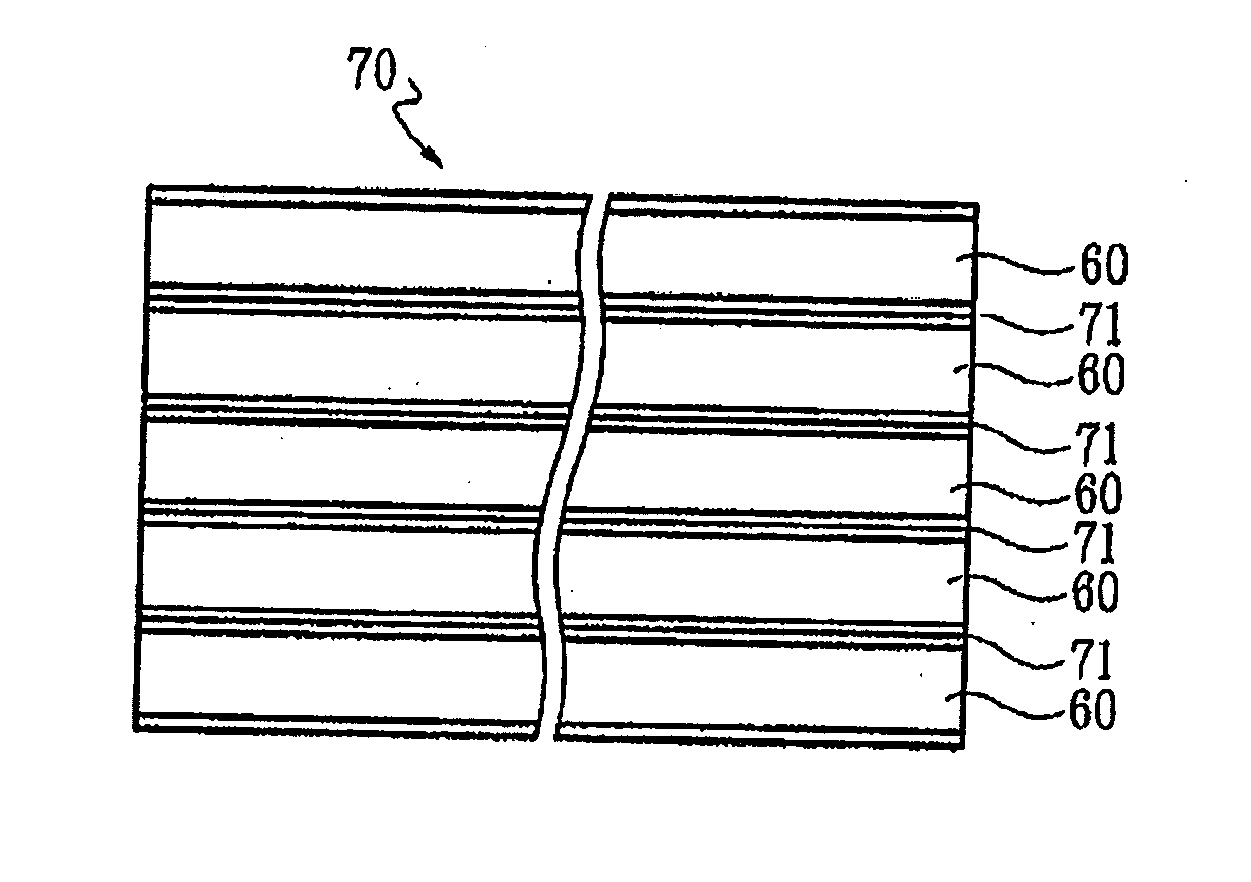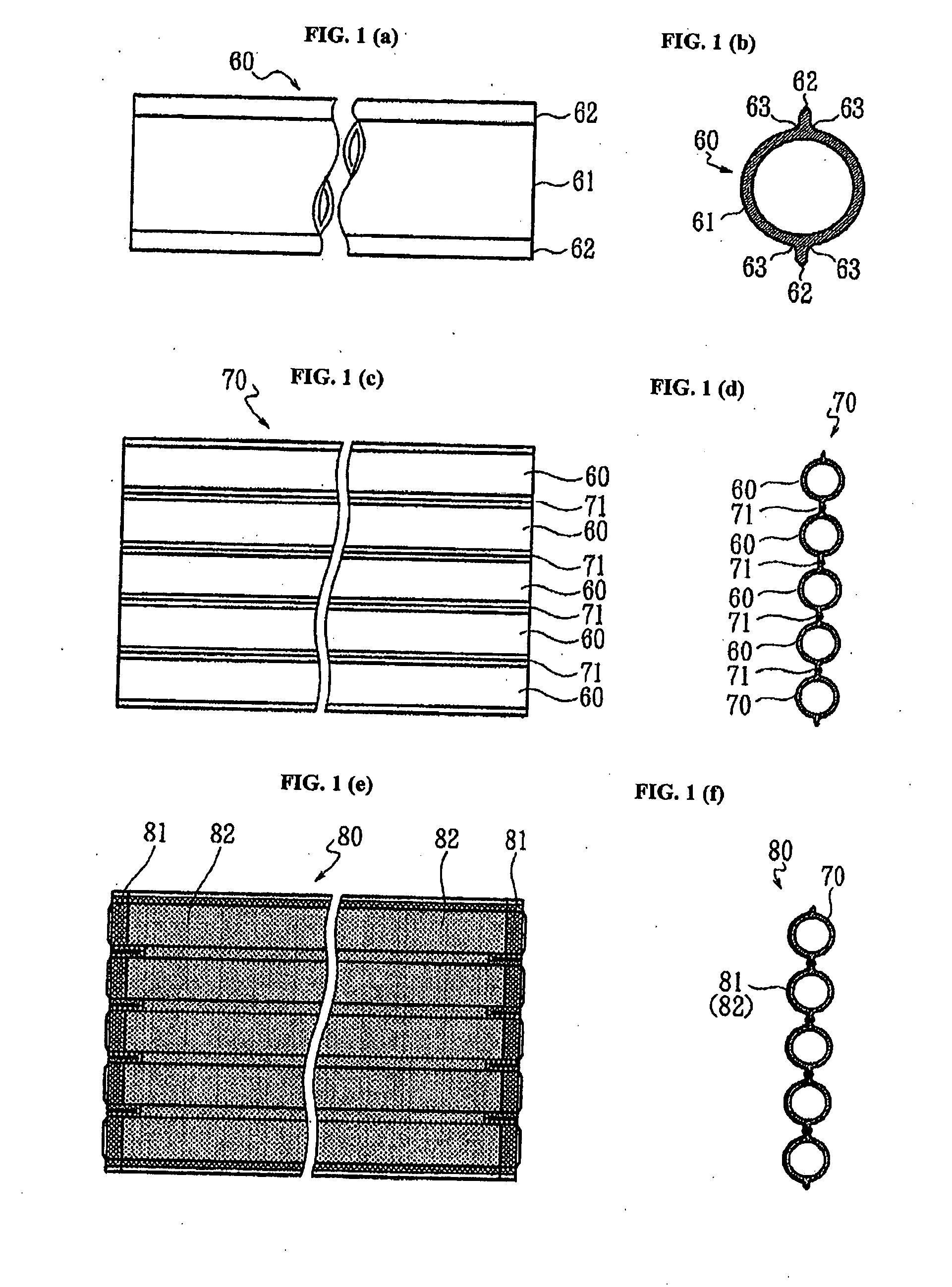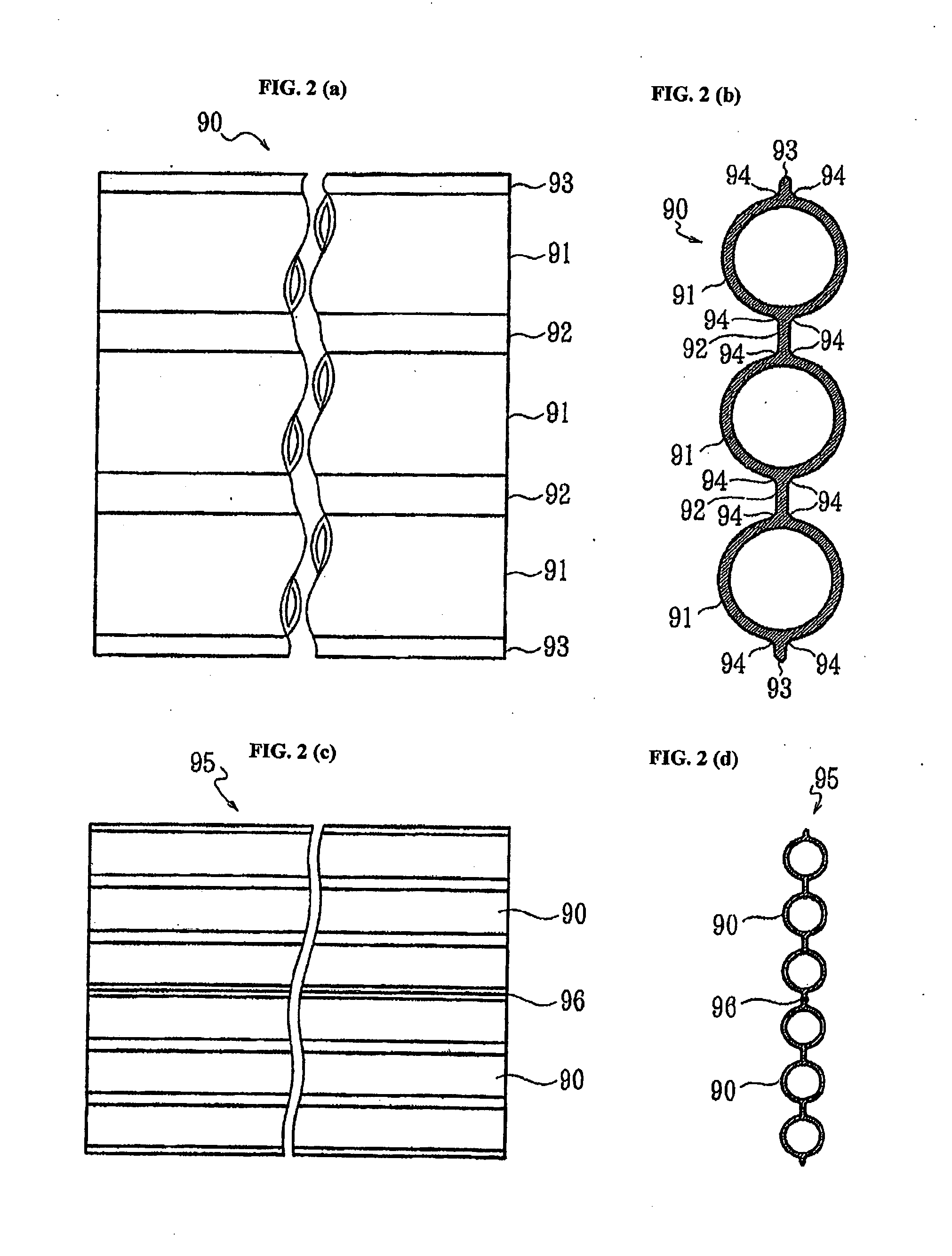Boiler waterwall panel
a technology of boiler water wall and water wall plate, which is applied in the direction of steam boiler components, steam boiler components, lighting and heating apparatus, etc., can solve the problems of troublesome work for welding defects, corrosion of subatrate materials, and breakdown of corrosion resistant alloy coatings, etc., to reduce welding operation burden, improve welding efficiency, and perform more easily
- Summary
- Abstract
- Description
- Claims
- Application Information
AI Technical Summary
Benefits of technology
Problems solved by technology
Method used
Image
Examples
Embodiment Construction
[0069]The structure and production method of a boiler waterwall panel according to an embodiment of the present invention will be explained with reference to drawings. FIG. 1(a) is a side view of a finned tubular member 60, FIG. 1(b) is a cross-sectional view thereof, FIG. 1(c) is a side view of a panel body 70, FIG. 1(d) is a cross-sectional view thereof, FIG. 2(e) is a side view of a boiler waterwall panel 80, and FIG. 1(f) is a cross-sectional view thereof. The cross-section of each cross-sectional view denotes a cross-section perpendicular to the axial direction of the tubular portion 61.
[0070]This boiler waterwall panel 80 is produced as follows. That is, initially, a tubular member 60, which is a metal seamless finned pipe as the minimum constituent unit, is integrally produced by a hot extrusion method (see FIGS. 1(a) and 1(b)). A plurality of finned tubular members 60 are aligned in length, and the tip ends of the fin portions 62 as joining portions are welded with each othe...
PUM
 Login to View More
Login to View More Abstract
Description
Claims
Application Information
 Login to View More
Login to View More - R&D
- Intellectual Property
- Life Sciences
- Materials
- Tech Scout
- Unparalleled Data Quality
- Higher Quality Content
- 60% Fewer Hallucinations
Browse by: Latest US Patents, China's latest patents, Technical Efficacy Thesaurus, Application Domain, Technology Topic, Popular Technical Reports.
© 2025 PatSnap. All rights reserved.Legal|Privacy policy|Modern Slavery Act Transparency Statement|Sitemap|About US| Contact US: help@patsnap.com



